

Indigenous Voices. Nineteenth and early 20th–century written notes on spoken Native American languages are valuable in the effort to sustain and revive these languages after a long history of suppression and loss.
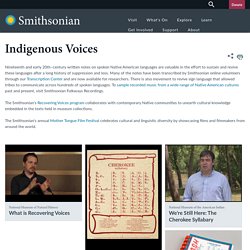
Many of the notes have been transcribed by Smithsonian online volunteers through our Transcription Center and are now available for researchers. There is also movement to revive sign language that allowed tribes to communicate across hundreds of spoken languages. To sample recorded music from a wide range of Native American cultures past and present, visit Smithsonian Folkways Recordings. The Smithsonian’s Recovering Voices program collaborates with contemporary Native communities to unearth cultural knowledge embedded in the texts held in museum collections.
Relearning The Star Stories Of Indigenous Peoples. Listen to a conversation on Science Friday about the historical role of science in Indigenous communities and considering a broader definition of science.
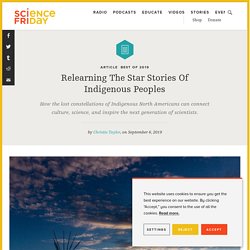
The Ngāi Tahu Atlas — Cultural Mapping Project — Te Rūnanga o Ngāi Tahu. The emphasis now changed from researching Māori place names to developing a Ngāi Tahu Atlas.
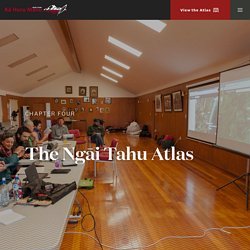
This required overcoming some technical and logistical issues. Ngai Tahu Archives Art Taonga. General Help The online collections catalog has several search options.
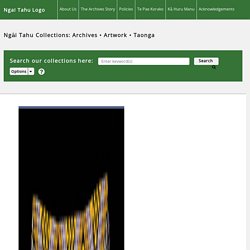
For a simple keyword search, enter your search term into the main search field and press the search icon or hit enter. Capital letters and punctuation are not necessary. For personal names, "last name first" order is not necessary. Use the * symbol to truncate a word in your search. Click on the"Search" search button to execute the search. Click on the "Advanced" button to expand to the advanced search options. Return To Top Simple Search The simple search option allows users to conduct a keyword-type search in all of the following fields at once: Title Creator / maker / author / publisher Early date Late date Physical / object description Organization / collection All terms entered in the main search box will be combined using the AND Boolean operator. Advance Search. Home - Te Rūnanga o Ngāi Tahu. California Secretary of State.
Diseños Collection Within the Diseños Collection there are 493 hand-drawn sketch maps, or diseños, that were created from approximately 1866-1871.
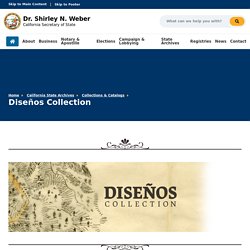
These sketch maps were hand-copied from originals that were created from approximately 1827-1846. These are part of a larger collection that makes up the Spanish and Mexican Land Grant Records that also include expedientes, or written documents regarding the grant petition, and other related documents. How making a film exploring Indigenous stories of the night sky enriched my perspective as a scientist. Have you ever looked up at the night sky and wondered what it all means?
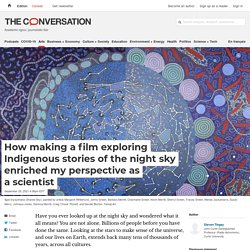
Indigenous Education Institute. Home – Australian Indigenous Astronomy. Frutos Digitales. Fulldome. + Yo Tierra Duración: 20 minutos Dirección: Milagros Varguez.
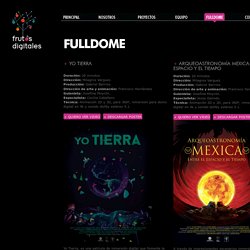
Producción: Gabriel Berríos. Dirección de arte y animación: Francisco Hernández Guionista: Josefina Moyrón. Especialista: Cecilia Caballero Técnica: Animación 2D y 3D, para 360º, inmersión para domo digital en 4k y sonido dollby estéreo 5.1. Yo Tierra, es una película de inmersión digital que fomenta la reflexión sobre el cuidado de nuestro planeta Tierra a través de un recorrido que va desde la formación de nuestro sistema solar, el desarrollo de la vida en nuestro planeta, desde la más pequeña hasta la presencia del ser humano y el impacto negativo que éste ha producido en el medio ambiente. Yo Tierra: una mirada inmersiva al cambio climático es la tercera película para fulldome completamente animada hecha en México. . + Arqueoastronomía Mexica: entre el espacio y el tiempo. Hālau Lamakū — ʻImiloa Astronomy Center. A Hua He Inoa - a collaborative effort lead by ʻImiloa - is shifting global paradigms, positioning Hawai‘i as the first place in the world to weave traditional indigenous practices into the process of officially naming astronomical discoveries.

As Hawaiʻi celebrates 35 years of revitalizing ʻōlelo Hawaiʻi, we acknowledge the capacity and relevance of ʻōlelo Hawaiʻi -- and the world view that it informs -- in modern contexts. A Hua He Inoa creates pathways in which language and culture are at the core of modern scientific practices. Navajo Skies – Planetarium Show. Indigenous Education Institute. Guide to Indigenous Land and Territorial Acknowledgements for Cultural Institutions – Cultural Institutions Guide to Land Acknowledgements.
Our home on native land. Relearning The Star Stories Of Indigenous Peoples. Native Skywatchers – Earth Sky Connections. Annette Lee is an astrophysicist, artist and the Director of the Native Skywatchers(NSW) research and programming initiative.
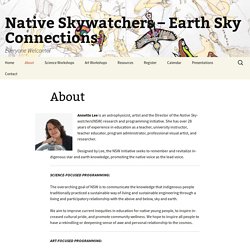
She has over 28 years of experience in education as a teacher, university instructor, teacher educator, program administrator, professional visual artist, and researcher. One Sky, Many Astronomies. MFNERC Science Facilitator Wilfred Buck has co-curated an exhibit at the Canada Science and Technology Museum in Ottawa.
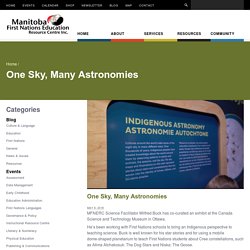
He’s been working with First Nations schools to bring an Indigenous perspective to teaching science. Buck is well known for his star stories and for using a mobile dome-shaped planetarium to teach First Nations students about Cree constellations, such as Atima Atchakosuk: The Dog Stars and Niska: The Goose. Now, he is sharing this knowledge Canada-wide with his exhibition, One Sky, Many Astronomies co-curated by Annette S.
Lee. The exhibition is taking First Nations astronomy to new heights and reviving thousands of years of tradition of looking at the night sky by the First Peoples of North America. According to Buck, who is from Opaskwayak Cree Nation, Canada’s Indigenous peoples developed their own extensive knowledge of the stars, which originated in early history. Hawaiian Star Lines. Note: The night sky charts below that extend to the left and right margins of the text may be larger than they appear in this html file. You can view the larger charts by dragging the images from the browser onto your desktop, then opening them with graphic-viewing software.
For print versions of the night-sky charts that would use less toner , you can use the Invert function in a graphic program like Photoshop (Image>Adjustments>Invert) to reverse the image (i.e., create a chart with a white sky and dark stars). Mau Piailug. Pius "Mau" Piailug (pronounced ; 1932 – July 12, 2010) was a Micronesian navigator from the Carolinian island of Satawal, best known as a teacher of traditional, non-instrument wayfinding methods for open-ocean voyaging. Mau's Carolinian navigation system, which relies on navigational clues using the Sun and stars, winds and clouds, seas and swells, and birds and fish, was acquired through rote learning passed down through teachings in the oral tradition. He earned the title of master navigator (palu) by the age of eighteen, around the time the first American missionaries arrived in Satawal. As he neared middle age, Mau grew concerned that the practice of navigation in Satawal would disappear as his people became acculturated to Western values.
In the hope that the navigational tradition would be preserved for future generations, Mau shared his knowledge with the Polynesian Voyaging Society (PVS). Early life (1932–1974)[edit] Satawal, Micronesia[edit] The University of Iowa - Academia.edu. Hawaiian Star Lines.